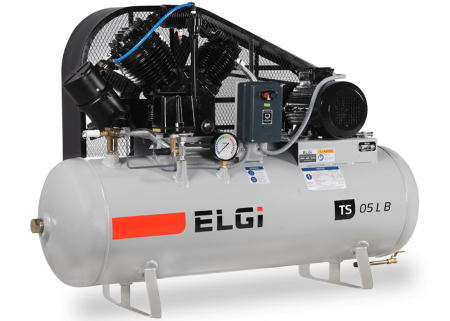Air compressor power calculator

Description
The program calculates air compressor power, for a given flow rate and required pressure. Program takes into account the site elevation and the efficincy according to compressors' type.
-
HP: This represents the theoretical horsepower required for the adiabatic compression process. Horsepower is a unit of power that's commonly used to measure the power output of engines.
-
N: This is the number of compression stages. In a multi-stage compressor, the air is compressed in stages to gradually increase the pressure. This is done to reduce the work done and increase efficiency.
-
k: This is the adiabatic expansion coefficient, also known as the heat capacity ratio. For air, this value is typically around 1.41. It's the ratio of the heat capacity at constant pressure (Cp) to the heat capacity at constant volume (Cv).
-
P1: This is the absolute initial atmospheric pressure, typically measured in pounds per square inch (psi). At sea level, this is usually around 14.696 psi.
-
P2: This is the absolute final pressure after compression, also measured in psi.
-
V: This is the volume of air at atmospheric pressure, also known as standard or free air. It's typically measured in standard cubic feet per minute (scfm) or cubic feet per minute (ft³/min).
The equation itself is derived from the principles of thermodynamics, specifically the first law of thermodynamics, which deals with the conservation of energy. The equation takes into account the work done on the air during the compression process, which is dependent on the change in pressure and volume.
The term 'adiabatic' refers to a process that occurs without heat transfer. In an adiabatic compression, all the work done on the air goes into increasing its pressure and temperature, and none of it is lost as heat.
The equation allows you to calculate the power required to compress a certain volume of air to a certain pressure, given the number of stages of compression. It's a useful tool for designing and analyzing air compression systems.
SCFM stands for Standard Cubic Feet per Minute. It's a measure of flow rate, and it's commonly used to quantify the mass flow rate of gases, especially in systems where the gas is being compressed or pumped, such as in HVAC systems or compressors.
The 'standard' in SCFM refers to a set of standard conditions, which are used to provide a baseline for the measurement. This is because the volume of a gas can change significantly with changes in temperature and pressure. By referring all measurements to a set of standard conditions, we can make meaningful comparisons between different measurements.
In the United States, the standard conditions are typically defined as a pressure of 14.696 pounds per square inch absolute (psia), a temperature of 60 degrees Fahrenheit, and 0% relative humidity. These conditions are meant to represent a typical 'sea level' environment.
In Europe, the standard conditions are often defined as one atmosphere absolute (ata) and 0 degrees Celsius.
The Compressed Air & Gas Institute and PNEUROP, along with the ISO standards, define the standard conditions as dry (0% relative humidity) air at 14.5 psia (1 bar) and 68 degrees Fahrenheit (20 degrees Celsius).
By using SCFM, we can compare the performance of different systems or the requirements of different tools or processes, regardless of the specific conditions at which they operate.
Calculation Preview
Full download access to any calculation is available to users with a paid or awarded subscription (XLC Pro).
Subscriptions are free to contributors to the site, alternatively they can be purchased.
Click here for information on subscriptions.


